Hello, this is Ueda from Nutrition Department, Cambodia.
It has been in the rainy season with heavy squalls every day in Cambodia but I am enjoying seeing the weather after heavy rain.
As our first measurement, we provided nutrition education for children in local junior high schools with the cooperation of a local education committee.
In Japan, there are generous opportunities for school children to receive nutrition education in accordance with nutritionists providing rich-nutrition meals.
On the other hand, in Cambodia, there are only a few schools providing school meals and hiring nutritionists thus having fewer opportunities for children to have nutrition education.
To improve this situation, the schools and the local education committee have been interested in providing nutrition education at schools.
And the Cambodian government has been trying to build curriculums for school teachers to provide it for their children.
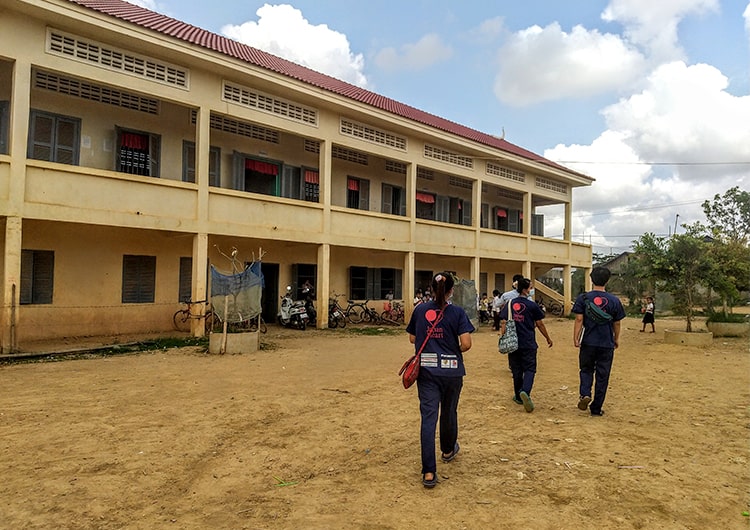
Before starting the project, we discussed with the local education committee where to implement it and how to spread it to other schools.
After selecting the school, we communicated with the school principal and he understood the importance of nutrition education for children and teachers.
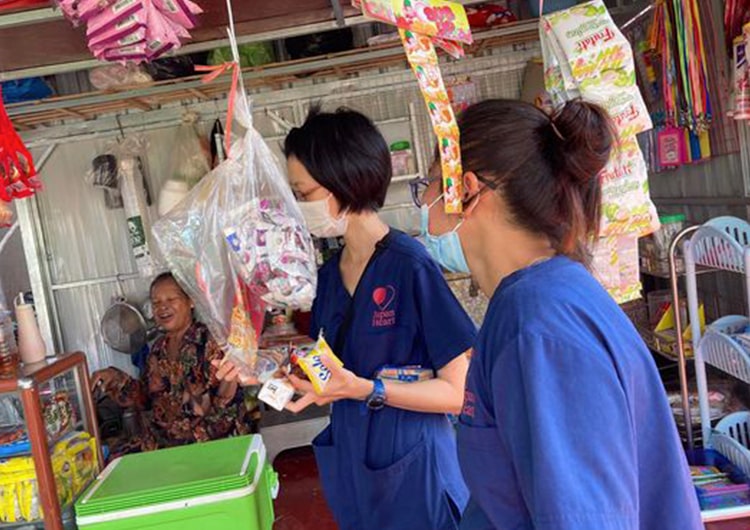
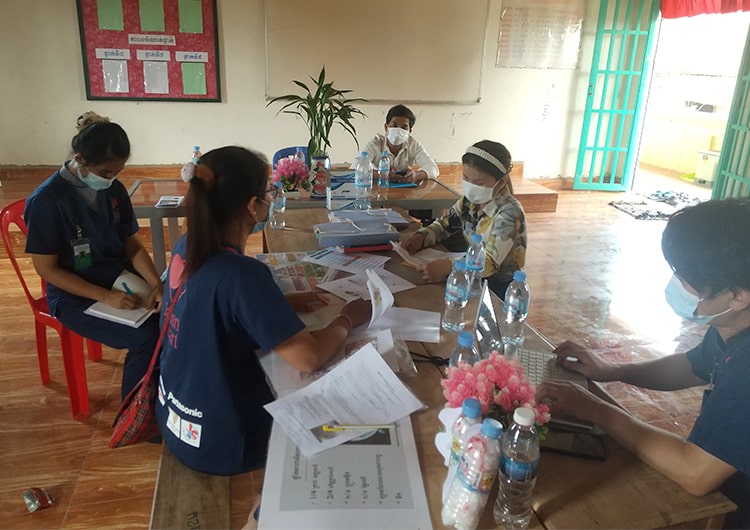
First of all, we investigated what kinds of foods children are eating at school. In Cambodia, children generally bring their allowance to buy snacks and beverages near schools.
In school, children were choosing their favorite foods to eat such as snacks, beverages, fried noodles, and bread.

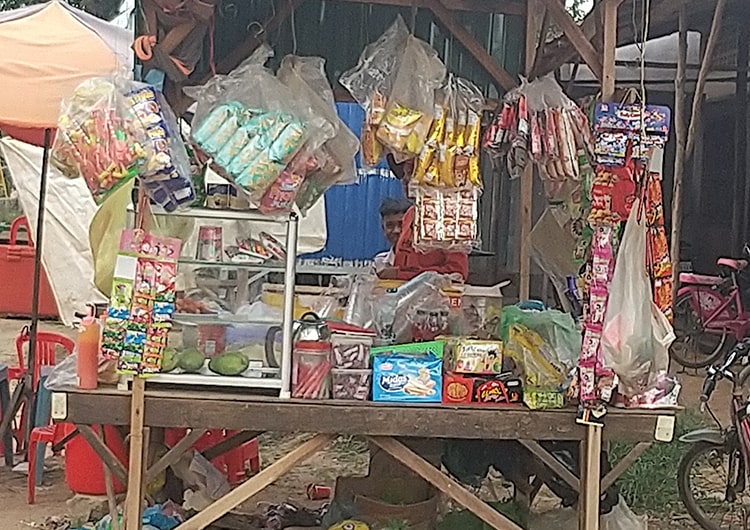
Since they have opportunities to choose what they eat every day, we set a purpose of this project as children can choose nutritious foods by using their knowledge learned through nutrition education.
A Cambodian nutritionist: Thira told us that the most important thing is children can enjoy learning it so we decided to include games not to make children get bored.
In the lecture, they learned about nutrients, lifestyle-related diseases, and other nutritious foods and we did true/false quizzes as well.
“Did you eat breakfast?”
“I ate porridge this morning!”
“Do you usually drink milk?”
“I did it yesterday!”
Thira tried to make students actively participate in the class and they enthusiastically answered the questions.
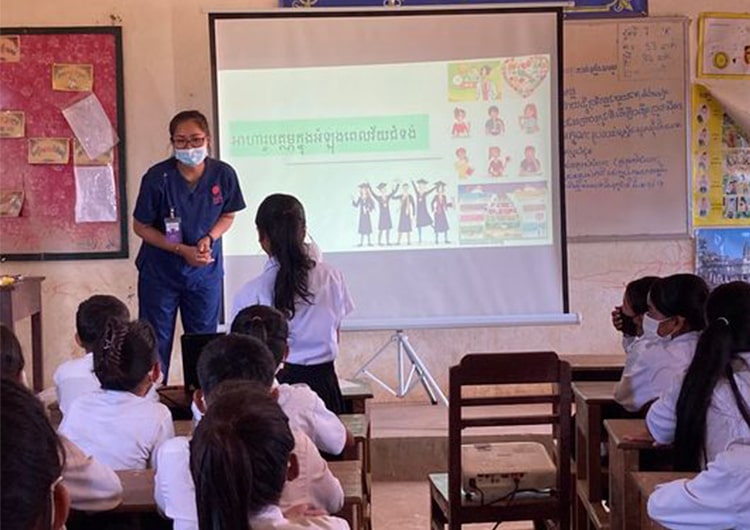
At the end of the class, we played a food-fishing game to settle down the knowledge they learned on that day.
The rule was simple; fishing food cards, make groups for each food, and make a food pyramid. Two teams were competing with each other on how quickly they can make a pyramid.
“Milk is in the protein group!”
“No! No! That is calcium!”
“I will be careful about having too many snacks and beverages because it will cause diseases!”
“I understood the foods were rich in various nutrition.”
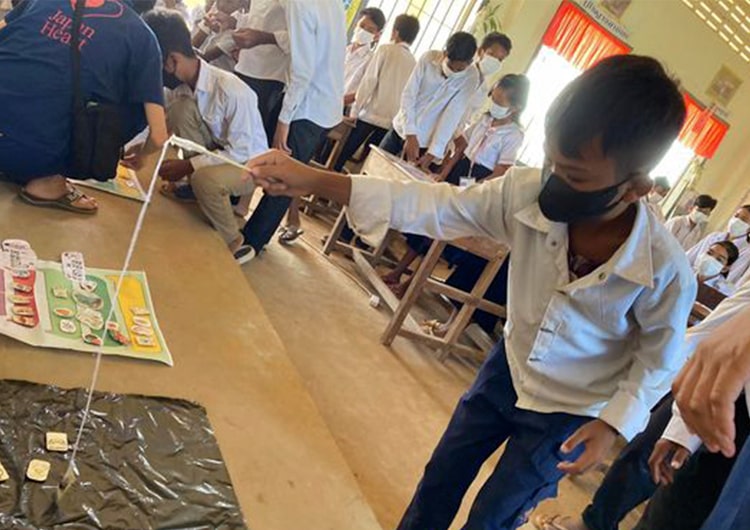
The students were energetically playing games with their team members and enjoyed the lecture. Even students in other classes also came to see the classroom.
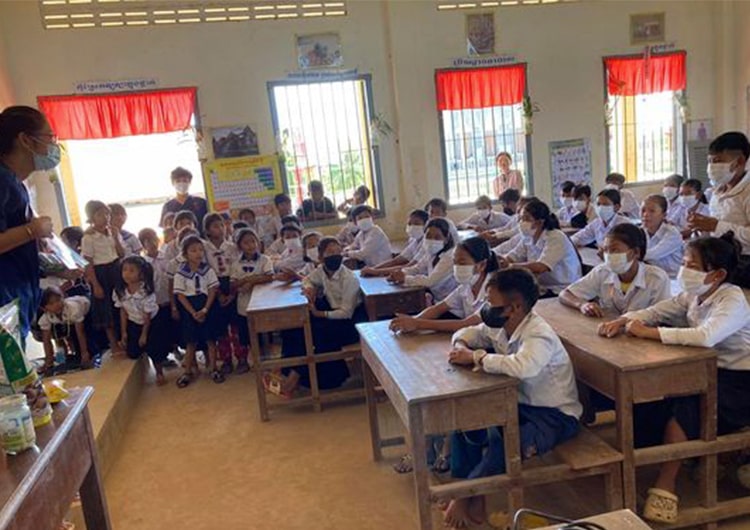
We are providing support continuously for local schools and teachers to give nutrition education to children more and more.
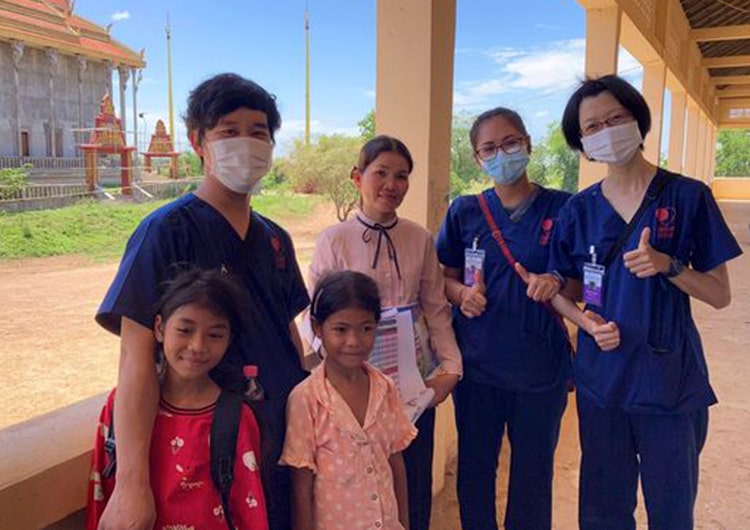
Nutrition Department Manager: Ueda

